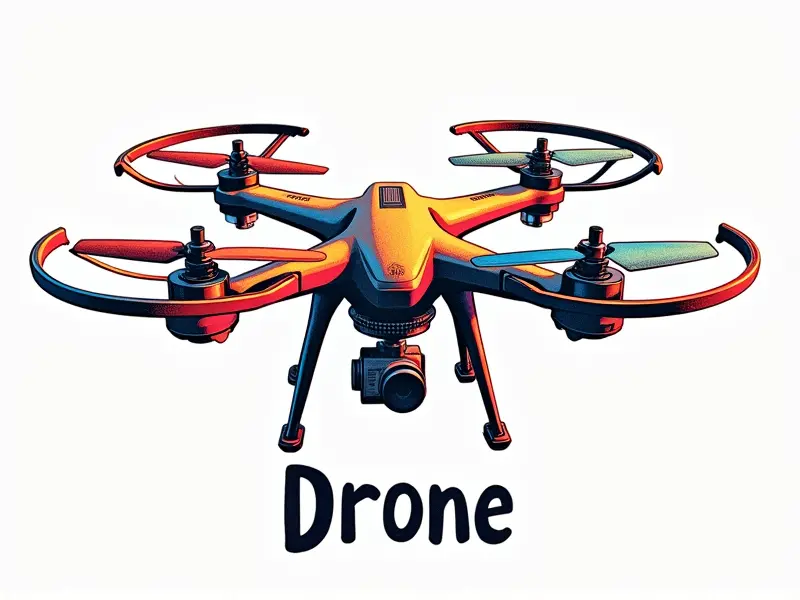How high can RC quadcopters go?

Max Altitude of RC Quadcopters Revealed
The maximum altitude that an RC quadcopter can reach is a topic of great interest for enthusiasts and hobbyists alike. The height your drone can achieve depends on several factors, including the model, battery capacity, and environmental conditions.
How High Can My RC Drone Fly?
Determining how high your specific RC quadcopter can fly involves understanding its technical specifications and limitations. Most consumer-grade drones have a maximum altitude of around 500 feet (152 meters), but some advanced models can reach much higher altitudes.
Top Flight Heights for RC Quadcopters
The top flight heights achieved by RC quadcopters vary widely. Some high-end drones, such as the DJI Mavic 3 and Autel Evo II Pro, are capable of reaching up to 10,000 feet (3,048 meters) under optimal conditions.
Breaking Barriers: RC Quadcopter Height
The barriers that limit how high an RC quadcopter can fly include battery life, air density at higher altitudes, and regulatory restrictions. Understanding these constraints is crucial for maximizing your drone's performance.
Battery Life Considerations
- Higher altitudes require more power to maintain lift due to thinner air.
- Battery capacity limits the total flight time available at high altitudes.
Air Density and Performance
The density of air decreases with altitude, affecting the drone's ability to generate lift. This means that as you ascend, your quadcopter will need more power to maintain its position.
Altitude Capabilities of Top Quadcopters
The best RC quadcopters on the market today offer impressive altitude capabilities:
DJI Mavic 3
- Max Altitude: Up to 10,000 feet (3,048 meters).
- Battery Life: Approximately 45 minutes.
Autel Evo II Pro
- Max Altitude: Up to 10,000 feet (3,048 meters).
- Battery Life: Approximately 40 minutes.
Reach for the Skies with RC Quadcopters
To reach the highest possible altitudes with your quadcopter, consider these tips:
Select High-Performance Models
- Choose drones designed for high-altitude flights.
- Invest in models with powerful motors and efficient batteries.
Maintain Optimal Flight Conditions
Flying your quadcopter on clear, calm days helps maximize altitude. Avoid flying during windy or rainy conditions to ensure optimal performance.
RC Quadcopter Altitude Limits Unveiled
The limits of RC quadcopters' flight altitudes are set by both technical and regulatory factors:
Technical Limitations
- Battery Capacity: Limited power supply restricts maximum altitude.
- Air Density: Thinner air at high altitudes reduces lift efficiency.
Regulatory Restrictions
In many countries, there are legal restrictions on flying drones above certain heights to ensure safety and privacy. Always check local regulations before attempting high-altitude flights.
Max Flight Height for RC Quadcopters
The maximum flight height achievable by your RC quadcopter depends on its model and environmental conditions:
Determining Your Drone's Capabilities
- Refer to the manufacturer’s specifications.
- Test in controlled environments to understand performance limits.
Sky's No Limit: RC Quadcopter Height
While there are practical and regulatory limits, pushing your quadcopter to its maximum altitude can provide breathtaking views and unique aerial footage. Always prioritize safety and adhere to local regulations when flying high.
Unlocking RC Quadcopter Flight Heights
To unlock the full potential of your RC quadcopter's flight heights:
Upgrade Your Equipment
- Invest in higher-capacity batteries for extended flight times.
- Select drones with advanced aerodynamics and powerful motors.
Optimize Flight Conditions
Flying under optimal conditions, such as clear skies and low wind speeds, can significantly enhance your drone's altitude capabilities. Plan your flights during the best weather for maximum performance.
Altitude Capabilities of RC Drones
The altitude capabilities of RC drones are a testament to their engineering prowess and technological advancements:
Advancements in Drone Technology
- Battery Efficiency: Improved battery technology extends flight times.
- Motor Performance: Enhanced motors provide better lift at high altitudes.
Future Prospects
The future of RC quadcopters looks promising, with ongoing advancements in aerodynamics and power systems that could push altitude limits even further. Stay tuned for the latest innovations in drone technology.
Conclusion
Flying your RC quadcopter to its maximum height can be a thrilling experience, offering unparalleled views and unique aerial footage. By understanding the technical limitations and regulatory requirements, you can safely reach new heights with your drone. Always prioritize safety and adhere to local regulations when pushing the boundaries of altitude.

